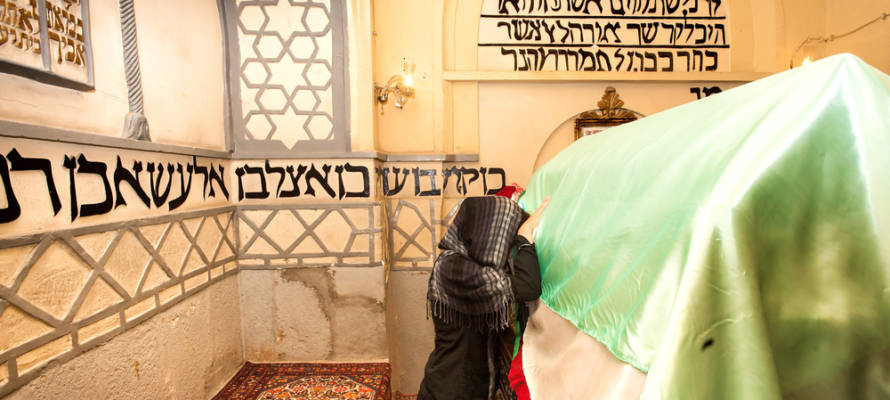Just three weeks before the holiday of Purim, which commemorates the biblical story of Esther and Mordechai, Iranian authorities threatened to destroy their historic tomb.
By United with Israel Staff
Iran recently threatened to “raid” the ancient tomb of the biblical Mordechai and Esther and turn it into “a consular office for Palestine,” according to a Twitter post by the Alliance for Rights of All Minorities in Iran (ARAM) on Sunday.
According to ARAM, “members of the Iranian Basij attempted to raid the historic site yesterday in an act of revenge against the Israelis Palestinian peace plan [Deal of the Century] by President Trump.”
Basij is part of the Islamic Revolutionary Guard Corps (IRGC), designated as a “terror organization” by the United States, Bahrain and Saudi Arabia.
“Esther and Mordechai were biblical Jewish heroes who saved their people from a massacre in a story known as #Purim. Their burial site has been a significant Jewish landmark for Jews and history buffs around the world,” ARAM said.
Breaking: Iranian authorities are threatening to destroy the historic tomb of Ester and Mordechai in Hamedan and convert the site to a consular office for Palestine. @AAzoulay @USCIRF @UNESCO pic.twitter.com/My0dKKJvfo
— ARAM Iran (@ARAMalliance) February 16, 2020
In 2008, the site was added by Iran to its National Heritage List. However, the popular pilgrimage site was threatened with destruction in 2010 by Islamist Basij members in retaliation for false reports that Israel intended to damage the Al Aqsa mosque on Jerusalem’s Temple Mount.
In 2011, the shrine’s status was downgraded from being an official pilgrimage site by Iranian authorities. They also “blamed’ Mordechai and Esther for the “massacre” of tens of thousands of “Iranians,” according to the Purim story, though the Islamic Republic of Iran was only established in 1979.
Ali Malmir, director-general of the Cultural Heritage and Tourism of Hamedan province told the semi-official Iranian Student News Agency (ISNA), “This shrine is nationally registered and has no affiliation with the issue of the Palestinian consulate, or anything elsewhere,” according to the Iran Christian News Agency.
Coronavirus and the Tomb of Mordechai and Esther
Following the outbreak of the deadly coronavirus in China, the Iranian news site, Radio Farda, posted an article in January warning that Chinese tourists, who visit the country to celebrate the “festival called Glorious Iran, which roughly coincides with the Chinese New Year holidays,” from January 24 to February 9 in Hamedan, could spread the disease.
The article noted that Hamedan “is the ancient Ecbatana, the capital of the Medes circa 700 BC. The city is nestled in mountains and has many historical sites including…the tomb of biblical Queen Esther and her cousin Mordechai, the most important pilgrimage site for Iranian Jews.”
The Purim Story
The Book of Esther describes the victory of the Jewish people in ancient Persia, 4th century BCE against an evil decree to kill them all.
King Ahasuerus, under the auspices of his wicked adviser, Haman, decreed that all the Jewish people should be massacred on the Jewish calendar date Adar 13.
However, the Jewish Queen of Persia, Esther, urged the king to rescind the order and the Jewish people were given permission to fight anyone who came to kill them.
Thousands of blood-thirsty anti-Semitic Persians were killed in the battles recorded in the Book of Esther.
The miraculous survival of the Jewish people at that time is commemorated each year with the reading of the story in the Scroll of Esther and festive celebrations. Purim is celebrated this year on March 9.
